-
Seismologists "hear" the nuclear explosions in North Korea
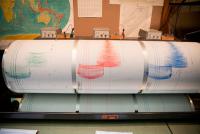
International experts are far from convinced that North Korea actually conducted its first H-bomb test, which was reported by the country last week.Seismology alone cannot tell whether it was a hydrogen bomb or not, but seismologists say that what emerges from the existing data is that last week’s seismic events in North Korea were slightly smaller than a similar event in 2013.
-
-
Toxins found in fracking fluids and wastewater: Study

In an analysis of more than 1,000 chemicals in fluids used in and created by hydraulic fracturing (fracking), researchers found that many of the substances have been linked to reproductive and developmental health problems, and the majority had undetermined toxicity due to insufficient information. The researchers say that further exposure and epidemiological studies are urgently needed to evaluate potential threats to human health from chemicals found in fracking fluids and wastewater created by fracking.
-
-
Gov. Brown declares emergency in wake of massive L.A. natural gas leak
California governor Jerry Brown on Wednesday declared an emergency in a Los Angeles neighborhood where a natural gas well has been spewing record amounts of stinking, global-warming methane gas. Energy experts said the breach at the natural gas storage reservoir, and the subsequent, ongoing release, are the largest known occurrence of its kind.
-
-
Remote-controlled robot inspects suitcase bombs
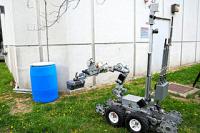
Abandoned items of luggage are frequently found at airports and train stations. This is a case for the emergency services, which have to assume that these items might contain bombs. They must assess the potential threat quickly, avert any possible danger, and preserve evidence for criminal proceedings. In the future, police will have the support of a remote-controlled sensor system as they go about their duties. Researchers are developing this sensor suite in cooperation with industry partners and criminal investigation authorities.
-
-
Transforming deadly chemicals into harmless dirt
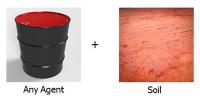
Destroying bulk stores of chemical warfare agents is a challenge for the U.S. and international community. Current methods of eradication, such as incineration or hydrolysis, are not fully agnostic, require significant amounts of water and create hazardous waste that requires further processing. DARPA’s Agnostic Compact Demilitarization of Chemical Agents (ACDC) program recently awarded two contracts to develop prototypes of a transportable disposal system able to convert dangerous chemicals into safe output, such as harmless soil, using minimal consumables and creating no hazardous waste.
-
-
Forensic seismology tested on 2006 munitions depot explosion in Baghdad
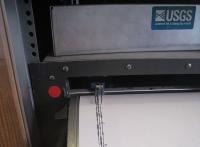
Seismometers were developed to record earthquakes, but then they turned out to be useful for monitoring nuclear tests, and now people are using them in all kinds of creative ways. Seismologists could distinguish, mortars, rockets, improvised explosive devices, helicopters, and drones from four miles away. In 2005 and 2006 ten seismometers were installed in northern and northeastern Iraq to study the seismic properties of the Earth’s crust in that area so that it would be possible to quantify the yield of nearby earthquakes or nuclear tests. They proved useful in identifying conventional explosions as well.
-
-
Pairing seismic data, radionuclide fluid-flow models to detect underground nuclear tests
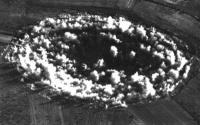
Underground nuclear weapon testing produces radionuclide gases that may seep to the surface, which is affected by many factors. These include fractures in the rock caused by the explosion’s shock waves that create pathways for the gas to escape plus the effect of changes in atmospheric pressure that affect the gases’ movement. Scientists have developed a new, more thorough method for detecting underground nuclear explosions (UNEs) by coupling two fundamental elements — seismic models with gas-flow models — to create a more complete picture of how an explosion’s evidence (radionuclide gases) seep to the surface.
-
-
One third of U.K.'s specialized terrorist response vehicles to be scrapped
In 2004, to meet the threat of terrorists using chemical, biological, or nuclear weapons in an attack in the United Kingdom, the government introduced the Incident Response Units (IRUs), with their distinctive red coloring with yellow stripes, at a cost of £54 million. To save money, one third of all the fire brigade vehicles which were part of the IRUs, and which would have been called out in the event of terrorists setting off a “dirty bomb,” are being scrapped.
-
-
Detecting, identifying explosives with single test
A new test for detecting multiple explosives simultaneously has been developed. The proof-of-concept sensor is designed quickly to identify and quantify five commonly used explosives in solution to help track toxic contamination in waste water and improve the safety of public spaces.
-
-
Syria is continuing to use chemical weapons against its people: Diplomats
Diplomats attending the annual meeting of the Organization for the Prohibition of Chemical Weapons (OPCW) in The Hague, on Monday accused Syrian president Bashar al-Assad of continuing to use deadly gas munitions against his own people, although Syria committed to dismantle and remove all of its stocks of chemical weapons. U.S. and EU representatives charged that the regime may still has in its possession large quantities of chemical armaments like sulfur mustard and sarin, which it has concealed from international inspectors.
-
-
Rock salt serving to store nuclear waste may not be as impermeable as previously thought
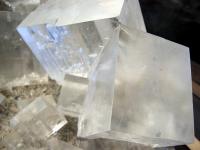
The Waste Isolation Pilot Plant (WIPP) in Carlsbad, New Mexico, stores low-level nuclear waste in salt beds beneath the ground. For decades there has been a proposal to build a permanent central repository under Nevada’s Yucca Mountains. This has renewed interest in rock salt as an alternative permanent storage solution for high-level nuclear waste. Researchers found that rock salt, used not only by the United States, but also by Germany, as a subsurface container for radioactive waste, might not be as impermeable as thought, or as capable of isolating nuclear waste from groundwater in the event that a capsule or storage vessel failed.
-
-
New sensors detect cable fire before it starts burning
Fires are frequently caused by smoldering cables. New sensors now help detect such smoldering fires at an early stage by analyzing the plastic vapors released by overheated insulating cables. Scientists have developed these hybrid sensors that combine measurement processes with data evaluation. These detect the gases released from the plastic coating due to heating and reliably identify and analyze the gas mixture and its concentration.
-
-
U.S. bioterrorism detection program unreliable: GAO
DHS’s BioWatch program aims to provide early indication of an aerosolized biological weapon attack. Until April 2014, DHS pursued a next-generation autonomous detection technology (Gen-3), which aimed to enable collection and analysis of air samples in less than six hours, unlike the current system (Gen-2), which requires manual intervention and can take up to thirty-six hours to detect the presence of biological pathogens. A GAO report found that DHS lacks reliable information about BioWatch Gen-2’s technical capabilities to detect a biological attack, and therefore lacks the basis for informed cost-benefit decisions about upgrades to the system.
-
-
Smart sensor detects single molecule in chemical compounds
Researchers have developed a smart sensor that can detect single molecules in chemical and biological compounds — a highly valued function in medicine, security, and defense. The researcher used a chemical and biochemical sensing technique called surface-enhanced Raman spectroscopy (SERS), which is used to understand more about the make-up of materials.
-
-
At the nanoscale, concrete proves effective for nuclear containment

One of the main challenges faced by the nuclear industry is the long-term confinement of nuclear waste. Concrete is one of the barrier materials commonly used to contain radionuclides, both in nuclear reactors and nuclear waste-storing facilities. New research shows concrete is a strong choice for the long-term confinement of nuclear waste.
-
More headlines
The long view
Keeping the Lights on with Nuclear Waste: Radiochemistry Transforms Nuclear Waste into Strategic Materials
How UNLV radiochemistry is pioneering the future of energy in the Southwest by salvaging strategic materials from nuclear dumps –and making it safe.
Model Predicts Long-Term Effects of Nuclear Waste on Underground Disposal Systems
The simulations matched results from an underground lab experiment in Switzerland, suggesting modeling could be used to validate the safety of nuclear disposal sites.
